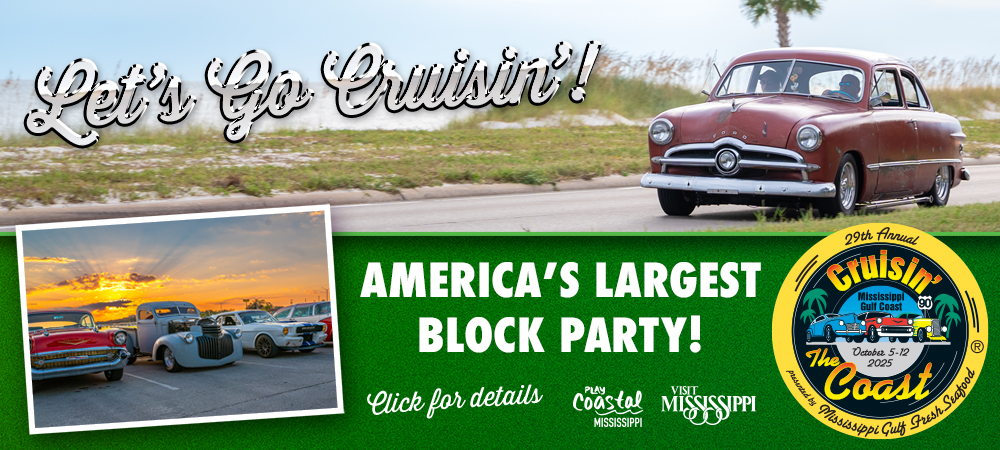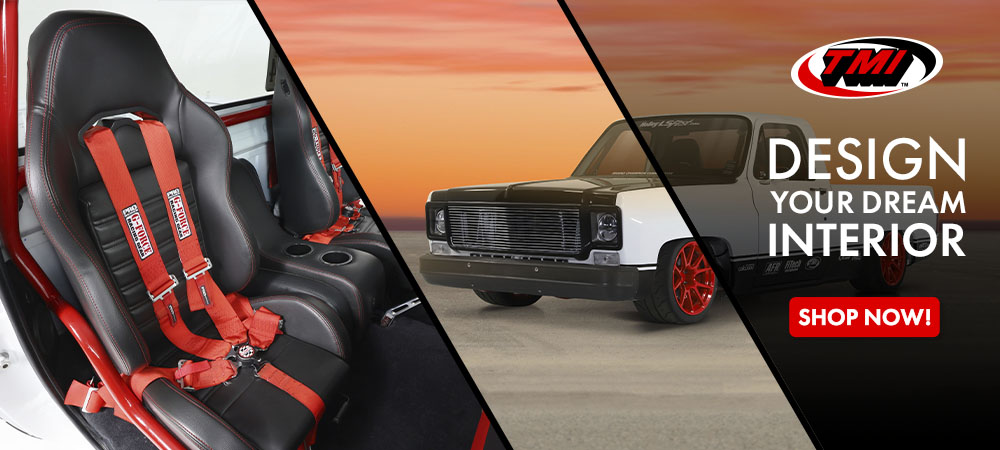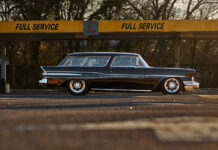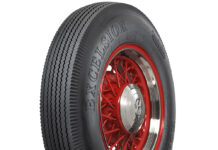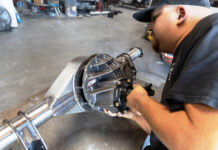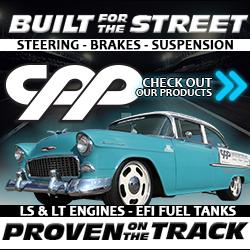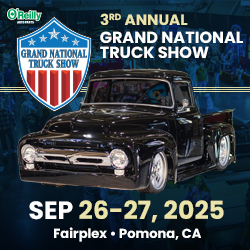This 1936 Willys Sedan is Rolling “Imagineering”
By Brian Brennan – Photography By John Jackson
Stare long enough at this 1936 Willys sedan and you begin to see where a creative idea crosses over into practical form. In other words, “Imagineering” (a registered trademark of Disney Enterprises) is a hallmark within our hobby. It’s the very nature of hot rodding to “think outside of the box” and imagine a great idea and then pull it off. Such is the case of our ’36 Willys sedan pictured here that belongs to Ron and Vicki Ernsberger of Ohio. No strangers to hot rods, especially the Willys (see accompanying feature on pages xx-xx), they teamed up with Brian Limberg of The Tin Man’s Garage (TMG) to yield an imaginative and trendsetting effort with their ’36 Willys four-door sedan.
The “other” ’36 in Ron and Vicki’s garage is the performance designed and built Willys pickup, while this four-door sedan is a combination of elegance and performance. There is no getting around the four-door Willys has a distinct hint of performance with the magnesium wheels and cheater slicks and, of course, the tube front axle gives the car a very gasser-style appearance. Couple this with the four doors, a stylish and colorful (note headliner) interior, and the overall room not associated with a cramped hot rod, and you have a very driveable hot rod.
Beginning with the stock frame it required Limberg to bolt it down to his frame table and begin the straightening and squaring process. Once this was accomplished, unusable original holes were filled before the boxing process took place. The rear section of the frame was narrowed to make room for the 10-inch cheater slicks.
Listening to Limberg he’ll tell you, “The goal was to keep the tires as close to the wheel openings as possible in the rear and to match the tire diameter to pay homage to the nostalgic Willys gassers of the era gone by.”
Read More: Hot Wheels Designer Larry Wood Inductee to the Automotive Hall of Fame
Moving to the front the frame was left stock (but boxed) and now outfitted with a custom 8-inch drop tube axle with parallel leaf springs, ’40 Ford spindles, Bilstein shocks, and a Speedway Motors Vega steering box. By gasser standards this Willys is darn near in the weeds. From here the TMG crew fabricated custom strut bars and mounted them to the top and back side of the axle. This provides ample high-speed stability. It also serves as a gusset to the spring perches. Round tubing was used to create the forward location for the 42-inch Speedway Motors ladder bar setup, Heidts Panhard bar, and all attaches to the Ford 9-inch housing packed with 3.25 gears and 28-spline axles. Afco coilovers are used along with Wilwood disc brakes in front and Ford drums in back with a dual reservoir master cylinder and a Speedway Motors 90-degree underdash pedal assembly. Halibrand vintage magnesium 15-inch wheels are used at the corners with Firestone/Coker 5.60-15 bias-ply front and in back Hurst pie-crust cheater slicks, measuring 31×10.5R15LT bias rubber. All the frame and related components were powdercoated at Wehrli Custom Fabrication & Powder Coating.
Dropped between the ’rails is a vintage-era ’55 Dodge Red Ram Hemi V-8 that sports 241 inches (“Baby Hemi”) built by Steve Lanius of Missile Engineered Racing Components. More history comes into play with the addition of an Offenhauser three-deuce intake that is topped with three, two-barrel Demon carburetors. All this and the stock firewall remains. Very cool. Other engine accessories included from O’Brien Truckers are the cast-aluminum individual carb scoops and finned valve covers. Getting the fuel load lit is the function of a Mallory distributor, an MSD coil, black PerTronix plug wires, while Powermaster received the nod for both the starter and alternator. Beginning the cycle are a pair of Optima 6V batteries. Exiting the spent gases is a set of Sanderson 1-5/8-inch primary tube headers with a 2-inch custom stainless steel exhaust system that back through a pair of Flowmaster Hush Power II mufflers. The Meziere electric water pump is located remotely, while a SPAL electric fan spins into service and a C&R radiator holds the coolant. The potent Baby Hemi is backed up to a 727 TorqueFlite transmission that goes through its paces via a Lokar shifter.
The TMG team knew the wheeltubs and floors would have to be built from scratch to accommodate the new chassis. Additionally, they also felt that the top portions were off given the flat center and bulbous appearance toward the rear. The crew fabricated a new roofskin with a more desirable lower profile (gives a “pancake” look). This in turn required only a 1-inch chop taken from the A-pillars to give the desired overall profile. What could be the most bypassed but significant structural and design change was the removal of the B-pillar. This provided unusually easy entrance and egress from the interior. All ’36 Willys (coupes, sedans, trucks) feature the same front doors. While the front door is typically longer than the back door, the opposite is true here. The rear door was cut apart and new mechanisms had to be engineered, which allowed the use of the original window regulators. TMG added a safety push button that will not allow the rear door to open unless engaged, so the front door must be opened to allow the back door to open. Next the inner door was reconfigured and completed. The door tops were split into two halves and re-arched to fit the new roof profile and then welded back together. It should also be noted that a new grille insert was made out of stainless steel and from here the brightwork was nickel plated and brushed in specific areas of the nickel to produce accents. All this work was handled at Advanced Plating.
A small detail we shouldn’t omit is the fuel fill location. The spare tire mount, now molded to the body, has a removeable center cap that is the new fuel fill location. When the metalwork was wrapped up the vehicle was brought to J. Miller Restorations. They handled all the detailed bodywork and moved onto a custom-mix green for color. Once more they moved from bodywork to applying the PPG DBC Basecoat/Clearcoat with a PPG Vibrance Clear VC5700. A special nod goes to Chad Ruff for the custom mixing of the paint and Bendi for pinstriping.
Read More: How to Custom Build and Upholster Custom Seat Cushions
A quick word on the color. Both Ron and Limberg agreed that the color needed to look like it was from the ’60s but fit a car of ’30s origins. What came about was a solid green with a gold pearl added for the main body color and a metallic color for the belt molding. Next up the solid green was mixed to look a bit “muddied” to mimic the new muddy grays, tans, and blues used on today’s new cars.
Moving inside, the reworked factory dash features a Jimmy Smith–designed custom-machined “waterfall” Willys emblem machined by Atomic Machine that is now surrounded by Classic Instruments gauges direct from the Custom Shop. Note the use of an ididit tilt column that is crowned with a custom one-off three-spoke wheel by SPARC Industries designed by Jimmy Smith. The interior sewing is the work of Customs by Vos and arguably the signature piece must be the eye-grabbing headliner. It is a one-piece-fitted fiberglass headliner that is wrapped with a stunning floral pattern. It will grab your attention and make you smile and say “that’s cool.” Next up Custom by Vos scratch built the rear seating, including the door and other interior panels. They also extensively reworked the Glide Engineering front bench seat. Once these pieces were in hand they were wrapped in Italian Eureka Off White leather with brown German square-weave carpeting.
We like the idea followed by execution … Imagineering befits this build very well. MR



















